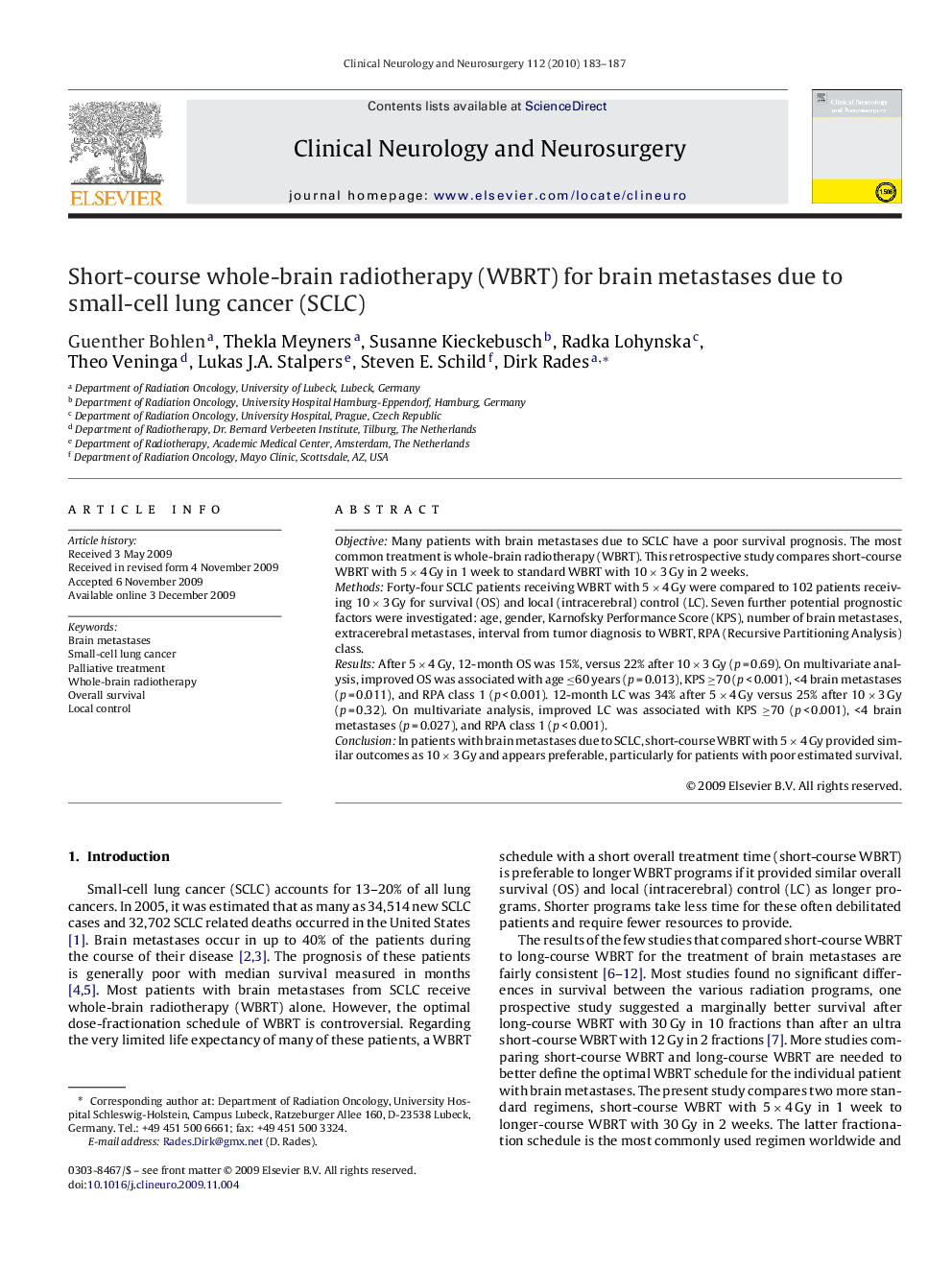| Article ID | Journal | Published Year | Pages | File Type |
|---|---|---|---|---|
| 3041265 | Clinical Neurology and Neurosurgery | 2010 | 5 Pages |
ObjectiveMany patients with brain metastases due to SCLC have a poor survival prognosis. The most common treatment is whole-brain radiotherapy (WBRT). This retrospective study compares short-course WBRT with 5 × 4 Gy in 1 week to standard WBRT with 10 × 3 Gy in 2 weeks.MethodsForty-four SCLC patients receiving WBRT with 5 × 4 Gy were compared to 102 patients receiving 10 × 3 Gy for survival (OS) and local (intracerebral) control (LC). Seven further potential prognostic factors were investigated: age, gender, Karnofsky Performance Score (KPS), number of brain metastases, extracerebral metastases, interval from tumor diagnosis to WBRT, RPA (Recursive Partitioning Analysis) class.ResultsAfter 5 × 4 Gy, 12-month OS was 15%, versus 22% after 10 × 3 Gy (p = 0.69). On multivariate analysis, improved OS was associated with age ≤60 years (p = 0.013), KPS ≥70 (p < 0.001), <4 brain metastases (p = 0.011), and RPA class 1 (p < 0.001). 12-month LC was 34% after 5 × 4 Gy versus 25% after 10 × 3 Gy (p = 0.32). On multivariate analysis, improved LC was associated with KPS ≥70 (p < 0.001), <4 brain metastases (p = 0.027), and RPA class 1 (p < 0.001).ConclusionIn patients with brain metastases due to SCLC, short-course WBRT with 5 × 4 Gy provided similar outcomes as 10 × 3 Gy and appears preferable, particularly for patients with poor estimated survival.
